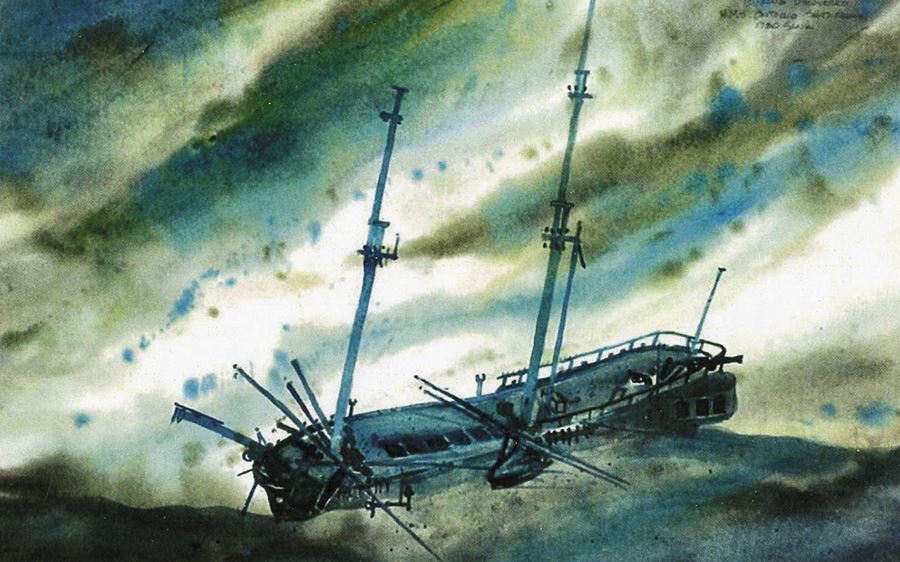.jpg_1600.jpg)
Finding the Holy Grail
The day Scoville and Kennard came across the HMS Ontario was just like any other day. On the side-scan screen there was an object, and Scoville could immediately tell it was a shipwreck. But they did not know just what shipwreck it was.
“By that time in our shipwreck career, I stopped saying we found the one,” Scoville said. “I would wait till verification before saying, ‘We found it.’”
Because it was so far away, they decided to keep going and take a closer look on the pass back. There was definitely something on the screen, but the image was unclear. The side-scan device has the ability to turn the frequency up, which makes the image much better but the distance it can scan much shorter.
When Scoville turned up the frequency, he saw two masts. At an even closer look, he noted two crow’s nests. They can also measure the length of the boat using the side-scan device, and it was almost an exact match. That is when he realized that they had found it.
They did not have their ROV (remotely operated underwater vehicle) with them, which they use to search wrecks deeper than 300 feet—deeper than recreational divers are allowed to go. The ROV is a device that is tethered to the boat that they can pilot to swim around the wreck and record what is below. “It’s kind of like playing a video game,” Scoville explains. They noted their exact location and called it a day.
Because of the weather conditions, the pair could not return to the shipwreck for two weeks. When they came back, they brought the ROV with them.
“Then we’re seeing the images of it and for sure it’s the HMS Ontario, and it was a little more climactic,” Scoville said. “Coming across the deck and seeing that the bell is still there—just looking at all the little pieces. That was really cool.”
Scoville and Kennard put together a press release when they confirmed it was the Ontario and called the Maritime Museum in London. The story picked up, and soon spread around the world. “I had people send me a newspaper from India. I got calls from Australia. I got several calls from the UK,” Scoville said.
He and Kennard believe that the cold, fresh water of Lake Ontario is what has kept the HMS Ontario in such great condition, especially considering the boat has been down there more than 230 years.
Finding the Ontario was in no way Scoville and Kennard’s retirement. After they found the HMS Ontario, Scoville and Kennard continued to discover 15 more shipwrecks in Lake Ontario and have worked on several projects of their own. The rich history of these boats is what keeps them coming back to knock shipwreck after shipwreck off of their list and make history of their own.
Read Part One here.


